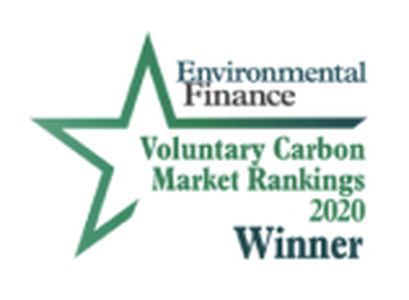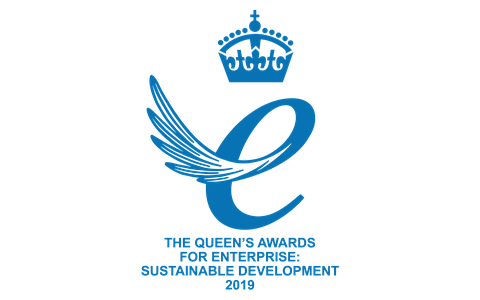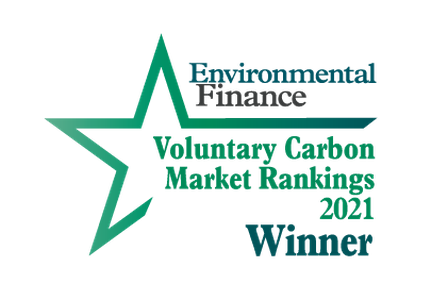“Ensuring that climate action is fair helps build resilient companies and speeds the shift we need to see” says Nick Robins, Professor in Practice for Sustainable Finance at the Grantham Research Institute, LSE. Read on to discover how maximising social opportunities in the transition to a zero carbon economy - considering workforces, low income households and beyond - can accelerate and enhance its value to businesses, governments and the environment.
Jonathan Shopley, 24 October 2019 | Climate leadership, Climate policy
In this Climate Leadership Series, we ask experts and influencers in business climate action to share their insight into best practices, discuss current and future trends, and debate the most impactful solutions. You can read more about Nick Robins and the Grantham Research Institute at the bottom of this article.
Jonathan Shopley (JS): What has motivated your journey to your current position?
Nick Robins (NR): I started to work on the just transition in 2017 prompted by a realisation that our conventional approach to climate action was missing out the social dimension. From the beginning of my work on the climate crisis back in the 1990s, I had always approached it as part of the wider shift to sustainable development. This was reinforced in my time in the financial sector as fund manager and investment analyst, looking at how Environmental, Social and Governance (ESG) issues influenced both returns and impact. Now sustainability is being recognised as a systemic issue by central banks and others.
Too often, however, environmental and social issues are siloed in the financial and business communities: climate change is still seen largely an environmental issue and human rights a social issue. But there are powerful links between the two. When you think about the transition to a zero-carbon economy, it’s an interlocking process of structural, economic, social, political, cultural and technological change. Investors and companies have perhaps been too carbon-centric in their approach to climate change and need to more proactively and comprehensively consider its social implications.
Nick Stern called climate change the greatest market failure. Arguably, climate change itself is the greatest injustice in history, if you think about the potential scale and duration of climate change into the future. The key is not just to make sure we “leave no people behind,” but to make sure we bring everyone with us as we make this journey.
For me personally, this realisation is also linked to my wider interest in corporate performance down the ages. It was a sense of injustice that motivated me to write The Corporation That Changed the World about the East India Company, and it’s what motivates me now.
JS: How would you define a just transition?
NR: The just transition starts with a focus on how the shift to a zero-carbon economy affects the workforce of the world in terms of the quantity and quality of jobs. All the analysis shows that the transition will be net positive, creating millions of new jobs across the world. The goal is to ensure that the jobs in the growing green economy are good jobs with decent conditions.
Very quickly, the just transition moves onto impacts on communities. There’s a powerful place-based dimension, with both high-carbon and green economy sectors clustered around resource-rich locations.
Investors talk about how to avoid stranded assets. We also need to avoid stranded workers, stranded communities and in some cases stranded countries.
There’s a consumer dimension too - both the exciting agenda around improving access to energy in developing countries and also ending fuel poverty in industrialised countries. Interestingly, we’re also finding that the just transition is not only relevant for the shift away from carbon but is also key to making economies more resilient. There are critical social justice issues around the impacts of climate change, notably in the developing world.
Some might see the just transition as a new issue, but it’s actually good old-fashioned sustainable development. For me, the just transition provides the connective tissue between the social and environmental pillars of the UN’s Sustainable Development Goals (SDGs), linking for example SDG 5: gender equality, SDG 7: clean energy, SDG 8: decent work, and SDG 13: climate change.
JS: Why is this important now?
NR: We all know that one of the factors holding back the transition is anxiety about the potential implications for jobs and communities in high-carbon sectors. A number of countries - such as Australia and the U.S. - are using this as the supposed reason for watering down climate action. This was one of the excuses the U.S. gave for pulling out of the Paris Agreement. In France, we’ve also seen the protests of the “gilets jaunes” against a carbon tax proposal that had not incorporated distributional implications in its design.
This is where the just transition comes in – to anticipate the impacts of the shift, both positive and negative, and take action to maximise the upside and mitigate the downside. The UK has recognised this - it adopted a target to be net zero by 2050, and the Committee on Climate Change has clearly stated that the transition “needs to be fair and be seen to be fair.” If not, then it believes that the shift could be “stalled,” in its words.
JS: What do we need to do to get there?
NR: We need to think about how to consciously manage the process of change and generate social co-benefits during the transition. This means crafting policies and business responses that lead to more and better jobs, stronger communities and with interventions that simultaneously tackle associated issues like health impacts. We need to empower people with the skills they will need as well as with opportunities to participate in decision-making in the workplace, in their communities and nationally. We need to ensure that people feel that the transition isn’t being done to them.
The just transition is not just the right thing to do and the necessary thing to do so that we build the coalitions required to make the shift to net zero. It’s also the smart thing to do. By having a strong human and social dimension to climate action, you’re going to make more resilient companies. It will build a more engaged and skilled workforce and stronger community relations. Companies should involve their workforce (including trade unions) and communities in discussions about their climate action, taking an opportunity-led rather than a risk-led approach.
JS: What practical tools are there for business and finance that are concerned about a just transition to understand what it is, find the correct attachment points, or take action that improves their competitiveness?
NR: Leading companies and investors get the rationale for the just transition. Now they want practical guidance. For business, the B-Team and the Just Transition Centre have produced a guide for business and launched a business pledge for the just transition, which companies such as Enel and Orsted have signed.
At the LSE, we’ve focused on the role of investors in supporting a just transition. We’ve produced an investor guide along with Harvard, the PRI and the ITUC.
Over 140 institutions with $9 trillion of assets have now backed an investor statement. This means incorporating the social dimension into shareholder engagement with companies where investors have been using their financial muscle to get changes in corporate strategy from large high carbon players (such as BP and Shell). It means getting companies to put in place just transition plans and disclosing what they are doing. Reporting frameworks like the Task Force on Climate-related Financial Disclosures (TCFD) are gaining traction – and need to be supplemented by what companies are doing to manage the social dimension. It also means changing the way that fund managers deploy their capital so that it generates not just environmental benefits, but social outcomes too – all of which is now greatly in demand with the rise of impact investing.
We’ve also just released a report showing what this means at the national level, releasing an investor roadmap for the just transition in the UK, highlighting the key place-based dimensions particularly for impact investors in community-based assets.
JS: One of the reasons why the Paris Agreement was successful in getting so many countries to commit to nationally determined targets was that it promised financing to developing countries. That support has not yet materialised in a meaningful way. Is this a real threat to the just transition?
NR: A real test for continued international cooperation is whether developed countries manage to hit the Paris goal of mobilising $100bn a year of climate finance flows for developing countries by the target date of 2020. Although the big development banks are increasing their allocations, we’ve still got a long way to go.
The global economic backdrop isn’t helping with investment becoming more nationally focused since the financial crisis and increasing protectionism further worsening the outlook. Capital flows into renewables fell in 2018 and rose in oil, gas and coal supply. The IEA’s conclusion was damning: “…there are few signs in the data of a major reallocation of capital required to bring investment in line with the Paris Agreement and other sustainable development goals”.
There’s a lot of recognition and commitment in the financial sector, but it’s not yet translating into assets and projects on the ground, which would generate strong livelihoods in developing countries.
JS: Finally, what should the priorities be for the upcoming Climate Summit in Santiago, Chile, to secure the strongest possible underpinnings for the Paris Agreement when it is implemented on 1st January 2021?
NR: The key task will be to intensify the political pressure on all countries to upgrade their nationally determined contributions and match this with the funding that will be required.
Here, I see the just transition as a key mechanism to strengthen policy commitments. What has been striking is how the just transition is moving from being a high-level concept to an actionable framework that’s being picked up by governments, corporations, trade unions, and investors. A smart approach to the social dimension of climate change will enable countries and businesses to be more ambitious with their targets, and will set the stage for us landing a big agreement at COP26 in 2020.
About Nick Robins
Nick Robins joined the Grantham Research Institute in February 2018 as Professor in Practice for Sustainable Finance. Nick is also Special Adviser on Sustainable Finance with UN Environment.
From 2014 to 2018, Nick was co-director of UN Environment’s Inquiry into a Sustainable Finance System. As part of this, Nick led country activities in Brazil, the EU, India, Italy and the UK, as well as thematic work focused on investors, insurance and green banking.
Before joining UNEP, he was Head of the Climate Change Centre of Excellence at HSBC. Prior to HSBC, Nick was head of Sustainable and Responsible Investment (SRI) funds at Henderson Global Investors. Nick has also worked at the International Institute for Environment and Development, the European Commission and the Business Council for Sustainable Development.
Nick has a BA in History from Cambridge University and an MSc in International Relations from LSE.
About The Grantham Research Institute
The Grantham Research Institute on Climate Change and the Environment was established by the London School of Economics and Political Science in 2008 to create a world-leading centre for policy-relevant research and training on climate change and the environment, bringing together international expertise on economics, finance, geography, the environment, international development and political economy.
Latest News

New test article 2023
A dummy article to test title issue.
Read more
Test article
This is an example of a test article.
Read more
Natural Capital Partners and ClimateCare become Climate Impact Partners
Natural Capital Partners and ClimateCare become Climate Impact Partners and sets goal of delivering 1 billion tonnes of emission reductions by 2030.
Read moreThe Latest Insights From
Climate Impact Partners

Busting Carbon Offsetting Myths
10 myths around net zero and carbon offsetting busted
Read more
Test article foreign lang with plug-ins
This is an example of a test article.
Read more
Innovation in Carbon Markets: the Good, the Bad, and the Ambiguous
As carbon markets grow and innovate how can Web 3.0 be harnessed in a positive way to build scale and impact?
Read more









